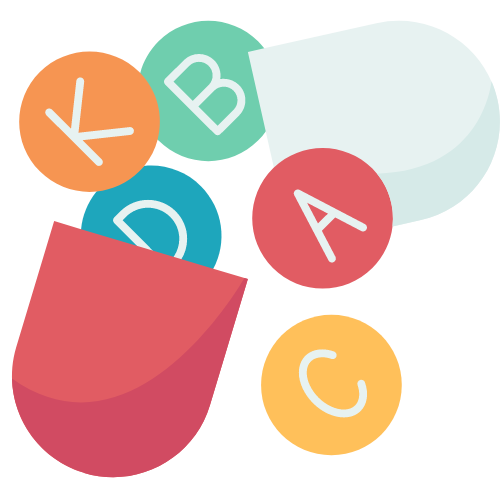Uncategorized
How to Read Supplement Labels: A Beginner’s Guide
How to Read Supplement Labels: A Beginner’s Guide
Navigating the world of dietary supplements can feel overwhelming, especially when faced with complex labels filled with unfamiliar terms. Understanding how to read and interpret supplement labels is essential to make informed decisions and ensure safety and effectiveness.
In this beginner’s guide, we’ll break down the key components of supplement labels, explain their significance, and provide tips for choosing the right products.
Why Reading Supplement Labels Matters
Supplement labels are a window into what you’re consuming. By carefully examining the label, you can:
- Verify product quality
- Ensure proper dosage
- Avoid allergens or harmful ingredients
- Identify potential interactions with medications
Being informed empowers you to choose supplements that align with your health goals.

Key Sections of a Supplement Label
1. Supplement Facts Panel
The Supplement Facts section provides detailed information about the product’s composition, including:
Serving Size
- Indicates the recommended amount to take at one time.
- For example: 1 capsule, 1 scoop (10g), or 2 gummies.
- Always adhere to the suggested serving size to avoid overconsumption.
Amount Per Serving
- Lists the quantity of each active ingredient, often measured in milligrams (mg), micrograms (mcg), or International Units (IU).
- Compare these amounts with your daily nutrient needs to ensure you’re not exceeding limits.
% Daily Value (DV)
- Reflects the percentage of your daily nutritional requirement provided by one serving.
- Example: Vitamin C – 100 mg (111% DV).
- A DV over 100% indicates that the serving exceeds the recommended intake.
2. Ingredients List
The ingredients list provides a complete breakdown of what’s in the supplement, including:
Active Ingredients
- These are the nutrients, herbs, or compounds that deliver the intended benefits.
- Example: Calcium carbonate, ashwagandha extract, omega-3 fatty acids.
Inactive Ingredients
- Additives like binders, fillers, flavorings, or preservatives that do not contribute to the supplement’s benefits.
- Common examples: gelatin, cellulose, citric acid.
- Avoid products with unnecessary or potentially harmful additives like artificial colors or sweeteners.
3. Other Label Information
Expiration Date
- Indicates the product’s shelf life.
- Avoid supplements past their expiration date, as potency and safety may be compromised.
Directions for Use
- Details when and how to take the supplement for optimal absorption.
- Example: Take one capsule daily with food.
Warnings and Precautions
- Highlights potential risks, such as interactions, allergies, or usage limitations.
- Example: Not recommended for pregnant women or individuals taking blood thinners.
Certifications and Quality Indicators
1. Third-Party Testing Seals
Look for certifications that indicate the product has been independently tested for purity, potency, and quality. Examples include:
- USP Verified
- NSF Certified for Sport
- ConsumerLab Approved
2. Non-GMO and Organic Labels
These labels confirm the product uses ingredients that are:
- Non-GMO: Free from genetically modified organisms.
- Organic: Grown without synthetic pesticides or fertilizers.
3. Allergen Warnings
Products often highlight common allergens like soy, gluten, dairy, or nuts. Choose supplements clearly labeled as allergen-free if needed.
Understanding Marketing Claims
Supplement packaging often includes enticing claims, but not all are regulated. Here’s what some common terms mean:
1. Clinically Proven
Indicates that the supplement’s effects have been studied in clinical trials. Verify claims by checking for peer-reviewed studies.
2. Natural
This term isn’t strictly regulated and can be misleading. Focus on the ingredients list for clarity.
3. Supports or Helps Maintain
These statements are allowed but don’t guarantee effectiveness. They simply suggest the supplement may contribute to overall health when used as directed.

Red Flags to Watch For
When reading supplement labels, be wary of:
- Proprietary Blends
- Often used to hide the exact amounts of ingredients.
- Example: Energy Blend – 500 mg (contains caffeine, ginseng, guarana).
- Avoid blends unless the individual ingredient amounts are disclosed.
- Excessive Dosages
- Mega-doses can lead to toxicity or adverse effects.
- Example: Vitamin D – 5,000 IU (625% DV) may exceed safe limits for some people.
- Unsubstantiated Claims
- Avoid products claiming to “cure” diseases or “guarantee” results.
- These statements often indicate a lack of scientific backing.
Tips for Choosing the Right Supplement
- Identify Your Needs
- Determine what you’re looking for—energy, immunity, joint support—and research the best ingredients for that goal.
- Research Brands
- Choose manufacturers with a reputation for quality, transparency, and third-party testing.
- Consult a Professional
- Talk to a healthcare provider or nutritionist to ensure the supplement is safe and appropriate for you.
- Start Small
- Begin with the lowest recommended dose and monitor how your body reacts.
Common Misconceptions About Supplement Labels
Myth 1: “If It’s on the Label, It Must Be True”
- Claims on the front of the package are often marketing-driven. Trust the Supplement Facts panel instead.
Myth 2: “All Supplements Are Tested”
- Not all supplements undergo rigorous testing. Third-party certifications are your best bet for quality assurance.
Myth 3: “Natural Ingredients Are Always Safe”
- Even natural compounds can have side effects or interact with medications.
Final Thoughts
Reading supplement labels is a skill that empowers you to make informed, safe, and effective choices. By understanding the key components, certifications, and marketing claims, you can confidently select products that meet your needs and support your health.
At Primebestpremierms, we prioritize transparency and quality in all our supplements. Explore our trusted products today and experience the difference informed choices can make for your well-being!


